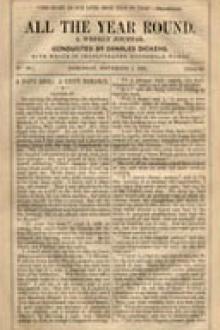Struggles and Triumphs - P. T. Barnum (top 20 books to read txt) 📗

- Author: P. T. Barnum
Book online «Struggles and Triumphs - P. T. Barnum (top 20 books to read txt) 📗». Author P. T. Barnum
I at once saw Mr. John Heath, the administrator, and his price was $15,000. I offered $10,000, payable in seven annual instalments, with good security. After several interviews, it was finally agreed that I should have it for $12,000, payable as above—possession to be given on the 15th November. Mr. Olmsted assented to this, and a morning was appointed to draw and sign the writings. Mr. Heath appeared, but said he must decline proceeding any farther in my case, as he had sold the collection to the directors of Peale’s Museum (an incorporated institution), for $15,000, and had received $1,000 in advance.
I was shocked, and appealed to Mr. Heath’s honor. He said that he had signed no writing with me; was in no way legally bound, and that it was his duty to do the best he could for the heirs. Mr. Olmsted was sorry, but could not help me; the new tenants would not require him to incur any risk, and my matter was at an end.
Of course, I immediately informed myself as to the character of Peale’s Museum company. It proved to be a band of speculators who had bought Peale’s collection for a few thousand dollars, expecting to join the American Museum with it, issue and sell stock to the amount of $50,000, pocket $30,000 profits, and permit the stockholders to look out for themselves.
I went immediately to several of the editors, including Major M. M. Noah, M. Y. Beach, my good friends West, Herrick and Ropes, of the Atlas, and others, and stated my grievances. “Now,” said I, “if you will grant me the use of your columns, I’ll blow that speculation sky-high.” They all consented, and I wrote a large number of squibs, cautioning the public against buying the Museum stock, ridiculing the idea of a board of broken-down bank directors engaging in the exhibition of stuffed monkey and gander skins; appealing to the case of the Zoological Institute, which had failed by adopting such a plan as the one now proposed; and finally I told the public that such a speculation would be infinitely more ridiculous than Dickens’s “Grand United Metropolitan Hot Muffin and Crumpet-baking and Punctual Delivery Company.”
The stock was as “dead as a herring!” I then went to Mr. Heath and asked him when the directors were to pay the other $14,000. “On the 26th day of December, or forfeit the $1,000 already paid,” was the reply. I assured him that they would never pay it, that they could not raise it, and that he would ultimately find himself with the Museum collection on his hands, and if once I started off with an exhibition for the South, I would not touch the Museum at any price. “Now,” said I, “if you will agree with me confidentially, that in case these gentlemen do not pay you on the 26th of December, I may have it on the 27th for $12,000, I will run the risk, and wait in this city until that date.” He readily agreed to the proposition, but said he was sure they would not forfeit their $1,000.
“Very well,” said I; “all I ask of you is, that this arrangement shall not be mentioned.” He assented. “On the 27th day of December, at ten o’clock a.m., I wish you to meet me in Mr. Olmsted’s apartments, prepared to sign the writings, provided this incorporated company do not pay you $14,000 on the 26th.” He agreed to this, and by my request put it in writing.
From that moment I felt that the Museum was mine. I saw Mr. Olmsted, and told him so. He promised secrecy, and agreed to sign the documents if the other parties did not meet their engagement.
This was about November 15th, and I continued my shower of newspaper squibs at the new company, which could not sell a dollar’s worth of its stock. Meanwhile, if anyone spoke to me about the Museum, I simply replied that I had lost it.
VIII The American MuseumA Trap Set for Me—I Catch the Trappers—I Become Proprietor of the American Museum—History of the Establishment—Hard Work and Cold Dinners—Additions to the Museum—Extraordinary Advertising—Barnum’s Brick-Man—Exciting Public Curiosity—Incidents and Anecdotes—A Drunken Actor—Imitations of the Elder Booth—Pleasing My Patrons—Securing Transient Novelties—Living Curiosities—Making People Talk—A Wilderness of Wonders—Niagara Falls with Real Water—The Club That Killed Cook—Selling Louis Gaylord Clark—The Fish with Legs—The Fejee Mermaid—How It Came Into My Possession—The True Story of That Curiosity—Japanese Manufacture of Fabulous Animals—The Use I Made of the Mermaid—Wholesale Advertising Again—The Balcony Band—Drummond Lights.
My newspaper squib war against the Peale combination was vigorously kept up; when one morning, about the first of December, I received a letter from the Secretary of that company (now calling itself the “New York Museum Company,”) requesting me to meet the directors at the Museum on the following Monday morning. I went, and found the directors in session. The venerable president of the board, who was also the ex-president of a broken bank, blandly proposed to hire me to manage the united museums, and though I saw that he merely meant to buy my silence, I professed to entertain the proposition, and in reply to an inquiry as to what salary I should expect, I specified the sum of $3,000 a year. This was at once acceded to, the salary to begin January 1, 1842, and after complimenting me on my ability, the president remarked: “Of course, Mr. Barnum, we shall have no more of





Comments (0)